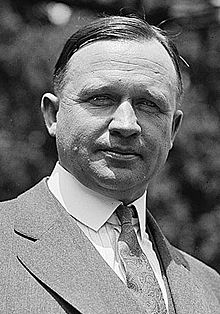Charles R. Mabey | |
|---|---|
 | |
| 5th Governor of Utah | |
| In office January 3, 1921 – January 5, 1925 | |
| Preceded by | Simon Bamberger |
| Succeeded by | George Dern |
| Member of the Utah House of Representatives from the 6th district | |
| In office January 13, 1913 – January 8, 1917 | |
| Preceded by | John W. Thornley |
| Succeeded by | Francis H. Nalder |
| Personal details | |
| Born | Charles Rendell Mabey October 4, 1877 Bountiful, Utah Territory |
| Died | April 26, 1959 (aged 81) Bountiful, Utah, U.S. |
| Political party | Republican |
| Spouse | Afton Rampton |
| Children | 4 |
| Profession | Politician Religious Leader |
Charles Rendell Mabey (October 4, 1877 – April 26, 1959) was an American politician who served as the fifth governor of Utah from 1921 to 1925. He is the last Utah governor to serve one term. He was a member of the Republican Party.
Mabey was born in Bountiful in the Utah Territory. He served in the United States Army during the Spanish–American War.[1]
From 1900 to 1903, Mabey served as a missionary for the Church of Jesus Christ of Latter-day Saints (LDS Church) in Germany.[2]
Mabey was a banker by trade. He was a member of the Utah House of Representatives from 1913 to 1917 and served again on active duty in the Utah Field Artillery during World War I. He also served for a time as mayor of Bountiful, Utah.[3]
From 1925 to 1935, Mabey served as a member of the General Board of the Young Men's Mutual Improvement Association of the LDS Church.[4]
Mabey fathered four children, all of them boys: Rendell, Charles, Robert, and Edward.